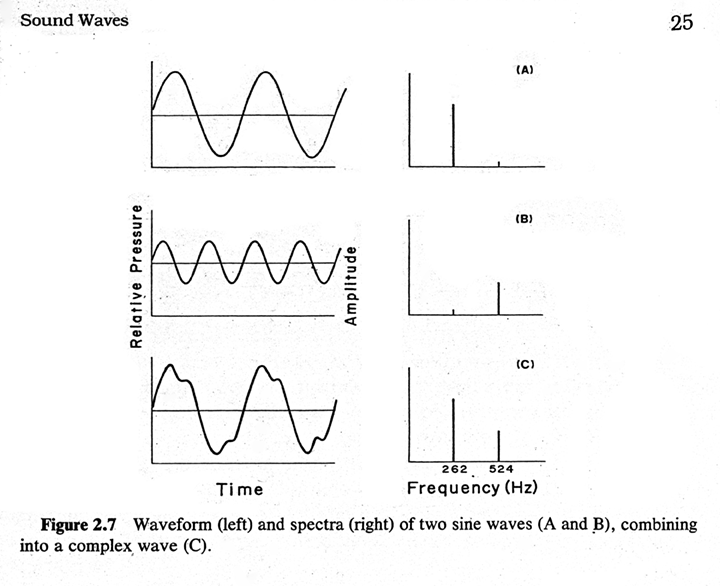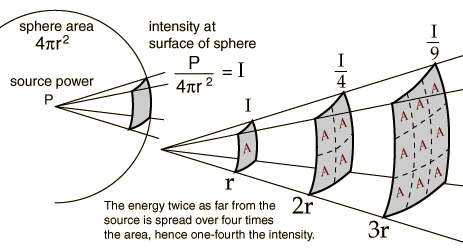
Sound Waves
Waves
Sound is a result of compressional waves bouncing off of reflective surfaces. When sound waves travel farther away from the source of the sound, they dampen. In other words, their amplitude decreases over time.
Complex Waves
In actual music, however, single waves are never heard in isolation. One note played on the harpsichord consists of a series of sine waves, where the lowest component is called the fundamental frequency.
The combination of components of a note is called a harmonic complex tone. This tone blends together into one sound.
Sound Wave Graphic
This image shows a fundamental frequency and one of its harmonics. The third wave is irregularly shaped, and shows the complexity of this particular harmonic complex tone. This complexity with layered harmonics gives musical sound its richness.

Projection of Sound Volume
The projection of sound, as shown in the graphic below, and as calculated by the inverse square law, refers to the distance from the sound source at which the created sound dissipates.


